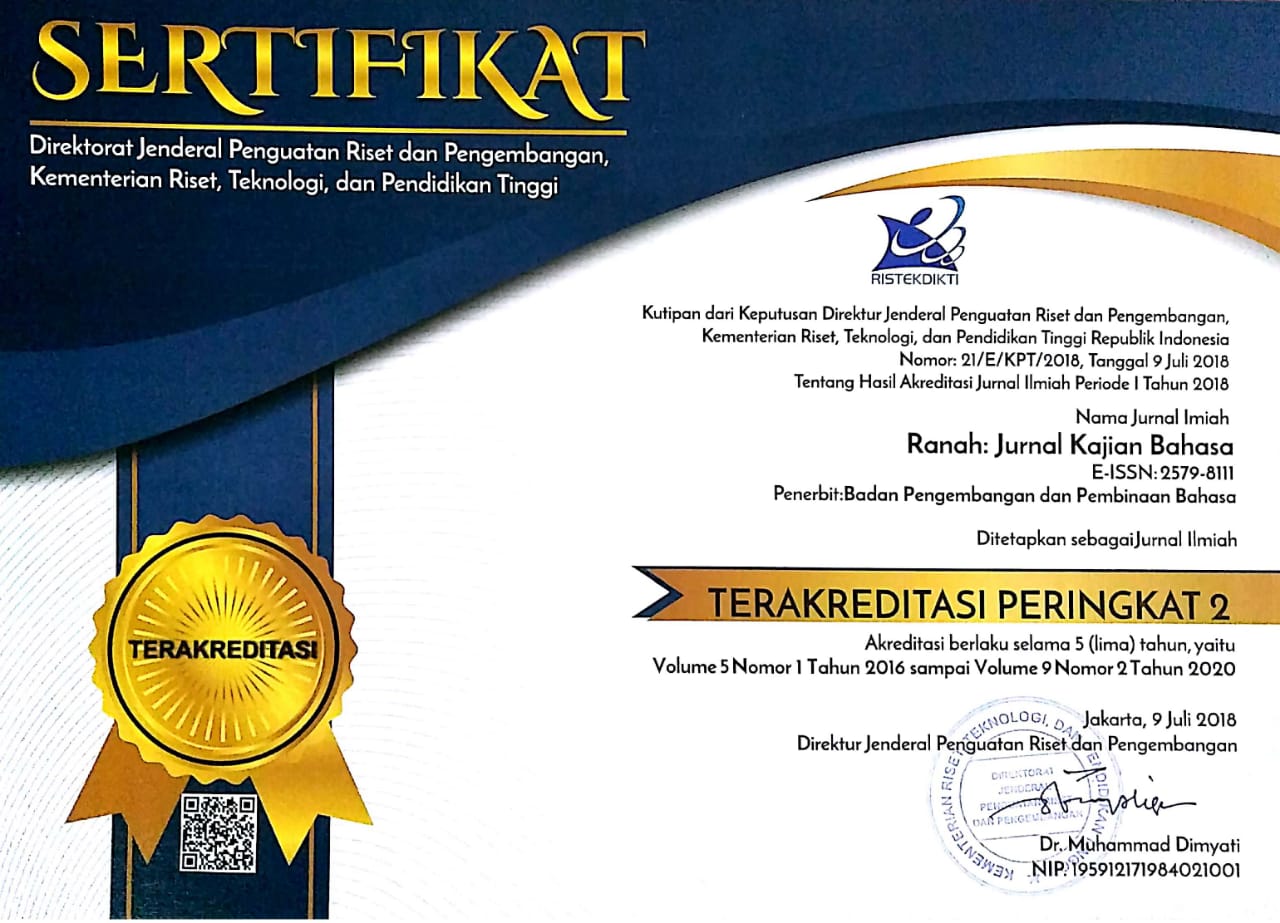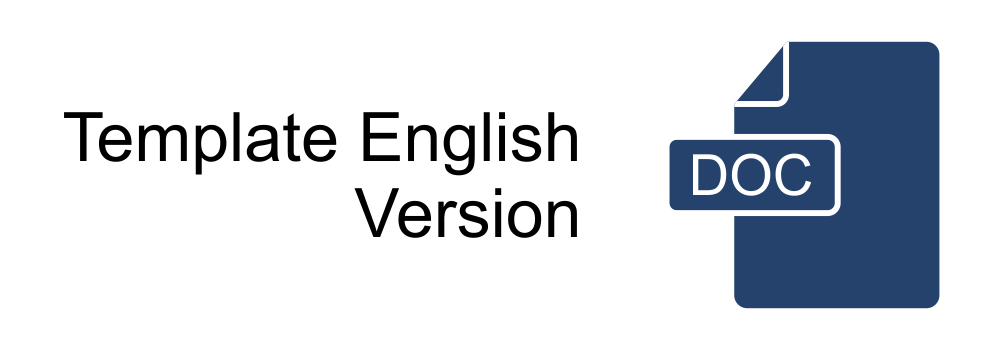Konstruksi Interogatif Polar dalam Bahasa Jepang
Abstract
Each language has its own characteristics, which can be seen by the interrogative construction themselves. Polar interrogative construction in Japanese will be discussed in this research. The research is kind of qualitative reasearch by using descriptive method. The data of the research is the polar interrogative construction consisted in the textbooks minnano nihongo shokyuu I and nameraka nihongo kaiwa. The theory of interrogative construction by Seimund (2011) was used as the theory in this research. The results of the research showed that the finding of polar interrogative construction was formed by the intonation, the addition of interrogative particle, and the interrogative tag. Meanwhile, the polar interrogative construction formed by the change of constituent order, verbal inflection, and disjunction was not found. The finding of polar interrogative construction in the textbook minna no nihongo shokyuu I is dominated by the polar interrogative construction which is formed by the adding of interrogative particle, while in the textbook nameraka nihongo kaiwa is dominated by the polar interrogative construction which is formed by the intonation.
Abstrak
Setiap bahasa memiliki karakteristik tersendiri. Karakteristik tersebut dapat dilihat dari konstruksi interogatifnya. Pada penelitian ini akan dibahas mengenai konstruksi interogatif polar dalam bahasa Jepang. Penelitian ini merupakan penelitian kualitatif dengan metode deskriptif. Data dalam penelitian ini adalah konstruksi interogatif polar yang terdapat dalam bukuMinna No Nihongo Shokyuu I, Nameraka Nihongo Kaiwa,dan komikOremonogatariChapter1karangan Kazune Kawahara danAruko.Teori yang digunakan dalam penelitian ini adalah teori konstruksi interogatif Siemund (2001). Hasil dari penelitian ini adalah konstruksi interogatif polar yang wujud terbentuk dari intonasi, penambahan partikel interogatif,dan taginterogatif. Sementarakonstruksi interogatif polar yang terbentuk dengan perubahan urutan konstituen, infleksi verbal dan disjungsi tidak ditemukan. Konstruksi interogatif polar yang wujud dalam buku Minna No Nihongo Shokyuu I dankomikOremonogatariChapter 1 didominasi oleh konstruksi interogatif polar yang terbentuk dari penambahan partikel interogatif,sementara pada buku Nameraka Nihongo Kaiwadidominasi oleh konstruksi interogatif polar yang terbentuk dari intonasi.
Keywords
Full Text:
PDFReferences
Kawahara, KazunedanAruko. (2011). 俺物語!!, My Love Story!! Vol 1. Betsuma shueisha: Tokyo.
Kridalaksana, Harimurti. (2008). Kamus Linguistik. Edisi Keempat. Jakarta: PT Gramedia Pustaka Utama.
Matthews, Peter Hugoe. (2007). The Concise Oxford Dictionary of Linguistics Second Edition. Oxford: Oxford University Press.
Miles, Metthew B.dkk. (2014). Qualitative Data Analysis, A Methods Sourcebook, Third Edition. Sage Publications, Inc.
Nettowaku, 3A. (2008). Minna No Nihongo Shokyu I. Surabaya: IMA Foundation Press.
Pasaribu, Parlindugan.(2017). “Analisis Penggunaan Hiteikei Hyougen (Nakerebanaranai, Nakutewanaranai, Naitoikenai).” Semarang: Skripsi Universitas Negeri Semarang. diperoleh dari http://lib.unnes.ac.id/18185/ 1/2302909027.pdf
Putrayasa, I. B. (2017). Sintaksis (Memahami Kalimat Tunggal). Bandung: Refika Aditama.
Siemund, Peter. (2001). Interrogative Constructions. In Language Typologyand LanguageUniversals, Vol. 2, Martin Haspelmath, Ekkehard Konig,wulf Oesterreicher and Wolfgang Raible (eds), 1010--1028. Berlin: de Gruyter. Diperoleh dari : https://www.researchgate.net/publication/278411165_Interrogative_Constructions
Sudaryanto. (2015). Metode dan Aneka Tehnik Analisis Bahasa (Pengantar Penelitian Wahana Kebudayaan secara Linguistik). Yogyakarta: Duta Wacana University Press.
Sutedi, Dedi. (2011). Dasar-Dasar Linguistik Bahasa Jepang Nihongogaku no Kiso (Edisi Revisi). Bandung: Humaniora.
Tomisaka, Yoko. (1997). なめらか日本語会話Successful Communication inJapanese.Tokyou: アルク.
Winarti, Sri. (2017). Sistem Bilangan Beberapa Bahasa di Papua, NTT, dan Maluku Utara. Ranah: Jurnal Kajian Bahasa, 6(2), 235—257. doi: https://doi.org/10.26499/ rnh.v6i2.450
DOI: https://doi.org/10.26499/rnh.v7i1.477








